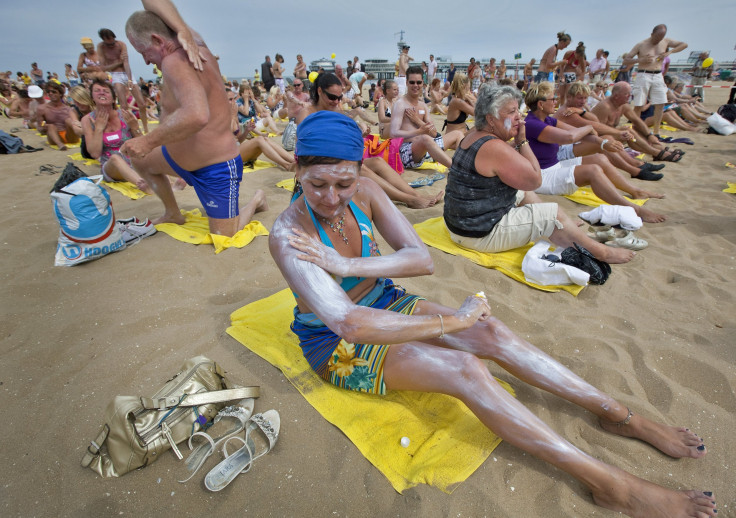‘Sunscreen Gene' Is UV-Radiation Resistant, Protects Against Skin Cancer

May is Skin Cancer Detection and Prevention Month, a time to raise awareness and encourage people to prevent or detect this disease, the most common form of cancer in the United States. Just in time, then, University of Southern California researchers have identified what they call a "sunscreen gene,” one that resists UV radiation and helps prevent skin damage.
Dr. Chengyu Liang of the Keck School of Medicine and her colleagues say the gene acts as a tumor suppressor for skin cancer and that greater understanding of how it works could lead to new drugs designed to help skin heal itself.
More than 90 percent of melanoma skin cancers develop due to damage to cellular DNA from exposure to UV radiation. If unrepaired, this leads to a buildup of potentially harmful genetic mutations. In the past, people didn’t realize their healthy-looking tans could lead to death, yet melanoma is the deadliest form of skin cancer; its mortality rate has doubled over the last three decades. Today, the American Cancer Society estimates it kills about 10,130 people each year.
For the current study, the researchers investigated a gene known to be UV resistant that was discovered two decades ago in relation to xeroderma pigmentosum, a disease which makes people extremely sensitive to sunlight and puts them at higher risk of developing skin cancer. At that time, scientists did not look at how this UV-resistant gene might function in healthy people. To learn about it, Liang and her co-researchers used data from 340 melanoma patients participating in the Cancer Genome Atlas, a national collaborative effort to map gene changes in major types of cancer. The team also enlisted the help of participants possessing either a mutant copy or reduced levels of the UV-resistant gene.
Liang and her colleagues extracted cell samples from participants and then gave a UV shot to all of them. After 24 hours, samples with the normal gene had repaired more than 50 percent of the UV damage, while those with a defective gene repaired less than 20 percent. The study does not prove mutant genes or fewer genes cause skin cancer, but the results do suggest that people with functioning UV-resistant genes may have an advantage.
“When people sunbathe or go tanning, those who have the normal UV-resistant gene can repair most UV-induced DNA burns in a timely manner, whereas those with the defective UV-resistant gene will have more damage left unrepaired," Liang said in a statement.
Exploring further, the researchers were able to unravel the thread of UV-resistant gene function within the cell repair process. First a protein scans for and tags damaged DNA. Next, the gene goes to work in the manner of a humanitarian convoy dropping aid packages where needed. Through reinforcement and support, the gene coordinates damage repair. Though it plays an indirect role, the team say expression levels of the UV-resistant gene relate to melanoma patients’ survival rates.
While this study is preliminary and inconclusive, Liang and her colleagues hope to continue researching the gene in mice with an eye to developing a new drug that would stimulate the repair abilities of this special gene. For people at high risk of skin cancer — whether due to genetics or long days in the sun — such a drug might prevent disease before it begins.
Source: Yang Y, He S, Wang Q, et al. Autophagic UVRAG Promotes UV-Induced Photolesion Repair by Activation of the CRL4DDB2 E3 Ligase. Molecular Cell. 2016.



























